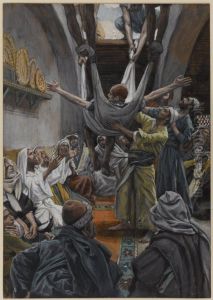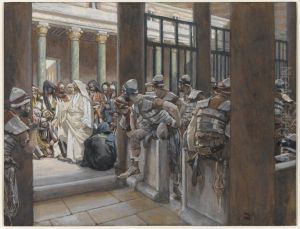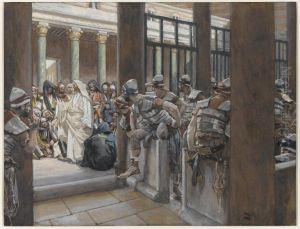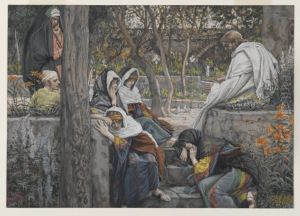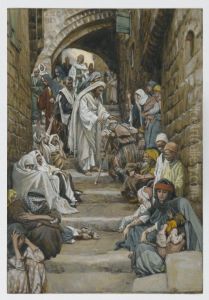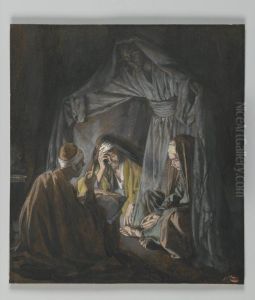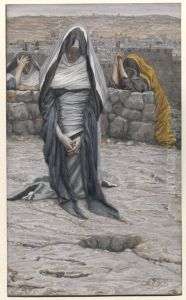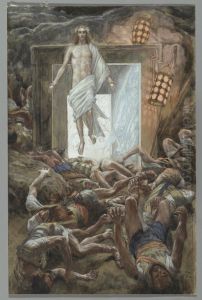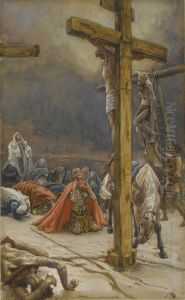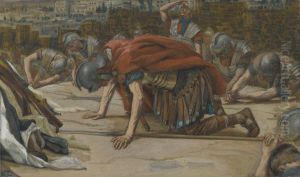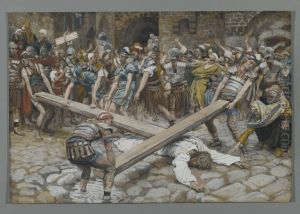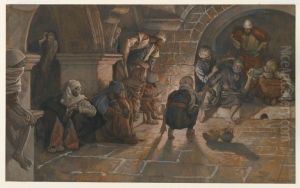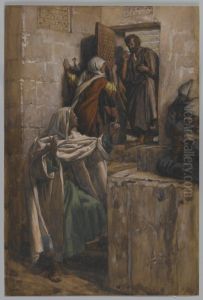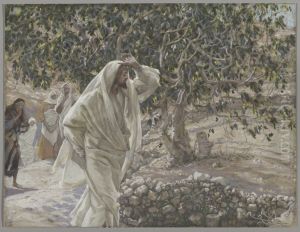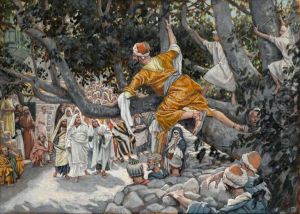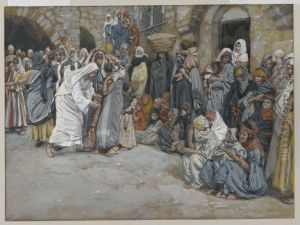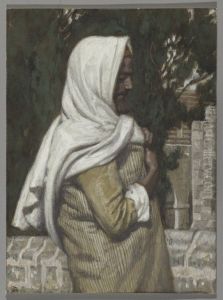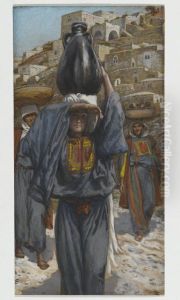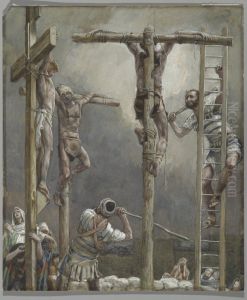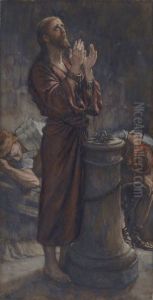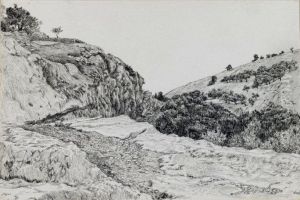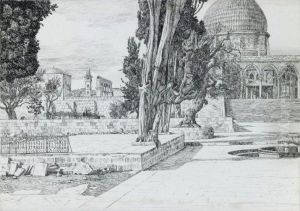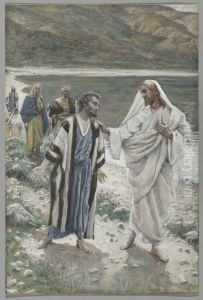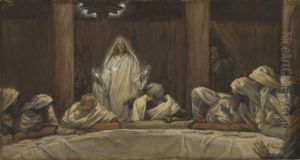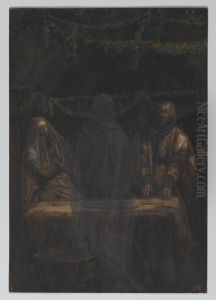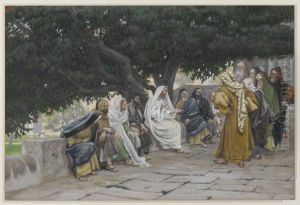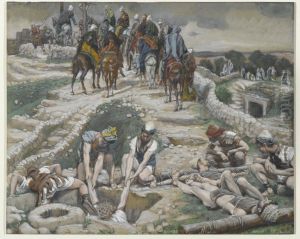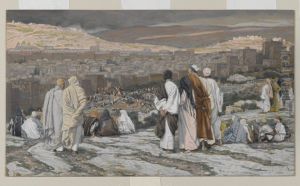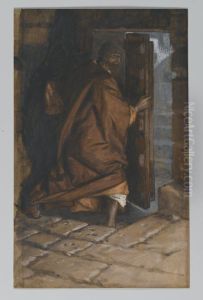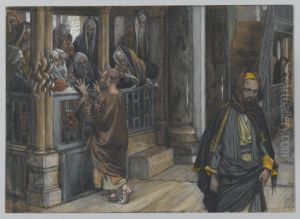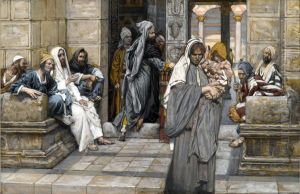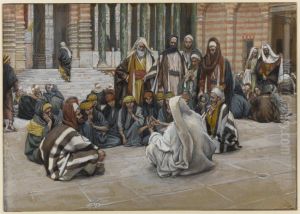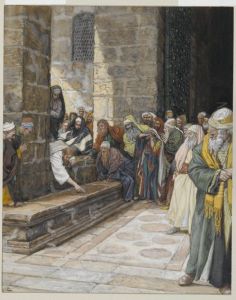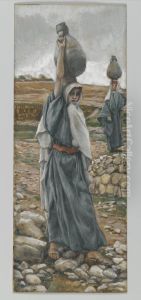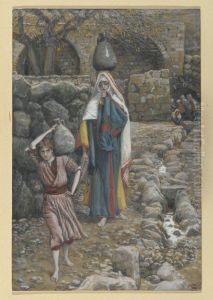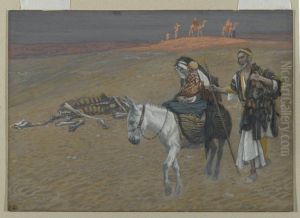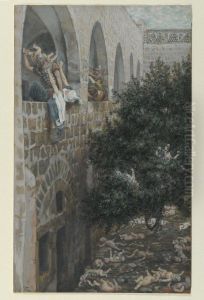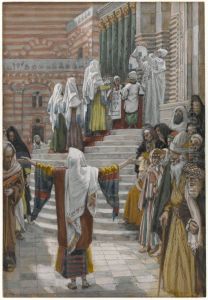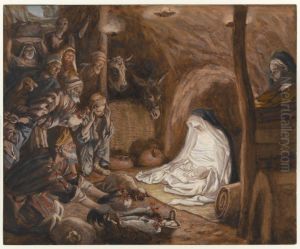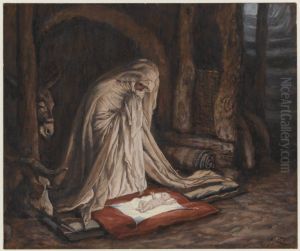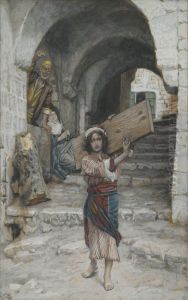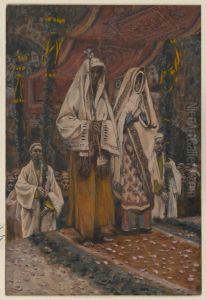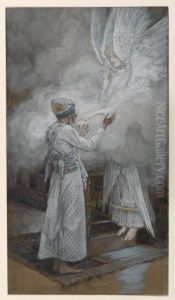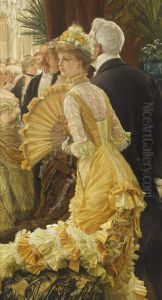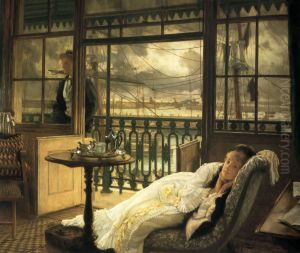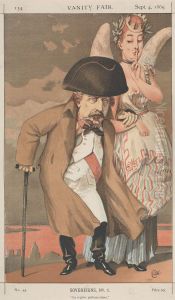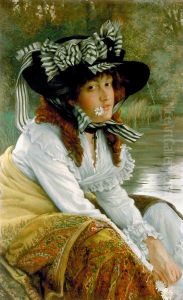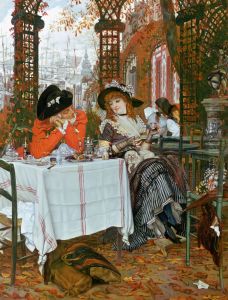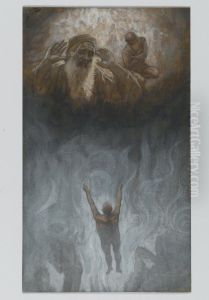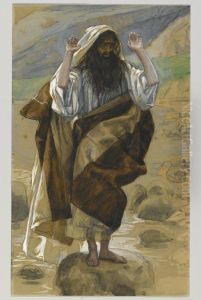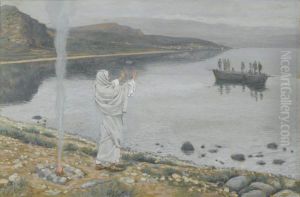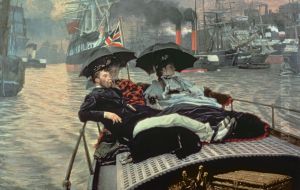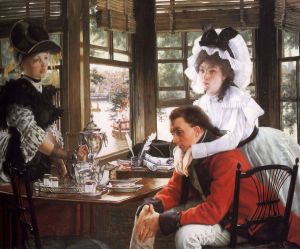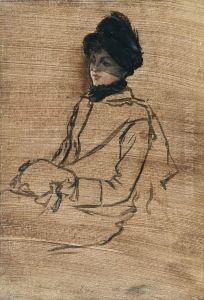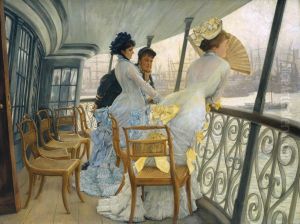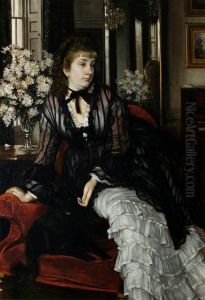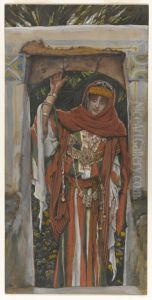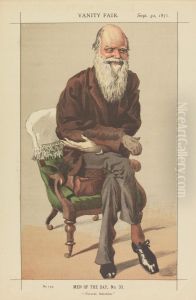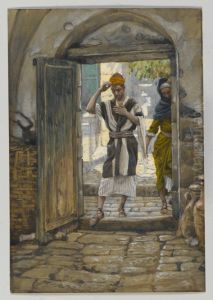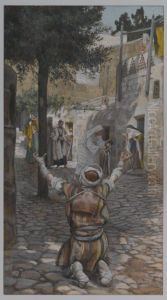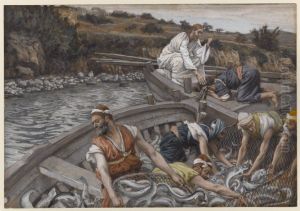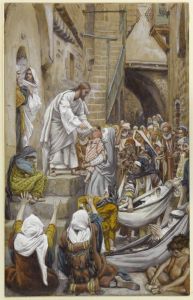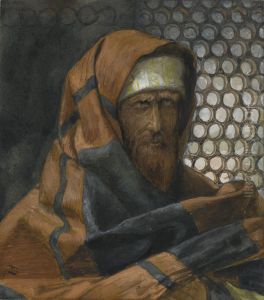James Tissot Paintings
James Jacques Joseph Tissot, known commonly as James Tissot, was a French painter and illustrator who lived during the late 19th century. He was born on October 15, 1836, in the port town of Nantes, France, to a prosperous merchant family. Tissot initially studied at the École des Beaux-Arts in Paris and began his career in the conventional academic manner. However, he soon developed a distinctive style that combined elements of the academic tradition with the influences of contemporary fashion and society.
In the early stages of his career, Tissot focused on historical and religious paintings, but by the 1860s, he had shifted his interest to scenes of modern life. He painted the Parisian bourgeoisie with a keen eye for detail and a flair for capturing the nuances of social interaction and fashion. Tissot's depictions of elegantly dressed women and the leisure activities of the upper classes were particularly admired, and his works were frequently exhibited at the Paris Salon.
In 1870, with the outbreak of the Franco-Prussian War, Tissot moved to London, where he quickly established himself as a successful painter of high society. There, he created some of his most famous paintings, such as 'The Ball on Shipboard' and 'London Visitors.' His works from this period are characterized by meticulous detail, vibrant color, and a narrative style that often included a subtle commentary on Victorian society.
Tissot's life took a dramatic turn in the late 1870s when he met Kathleen Newton, a divorcée who became his muse and the subject of many of his paintings. Their relationship was considered scandalous at the time, and it significantly influenced Tissot's work, leading to a series of intimate, domestic scenes. Tragically, Kathleen's health deteriorated, and she passed away in 1882, leaving Tissot devastated.
After the death of Kathleen Newton, Tissot's artistic focus changed once again. He returned to France and immersed himself in religious and spiritual themes. He embarked on a series of biblical illustrations, which are considered among his most significant works. The 'Life of Christ' series, which consisted of hundreds of paintings, was exhibited worldwide and contributed to a late-career resurgence in his popularity.
James Tissot died on August 8, 1902, in Buillon, France. His works remain popular and continue to be exhibited in museums around the world. Tissot's legacy lies in his ability to capture the essence of his time through a blend of precise detail, fashionable elegance, and insightful social commentary.
